#UVB
Explore tagged Tumblr posts
Text
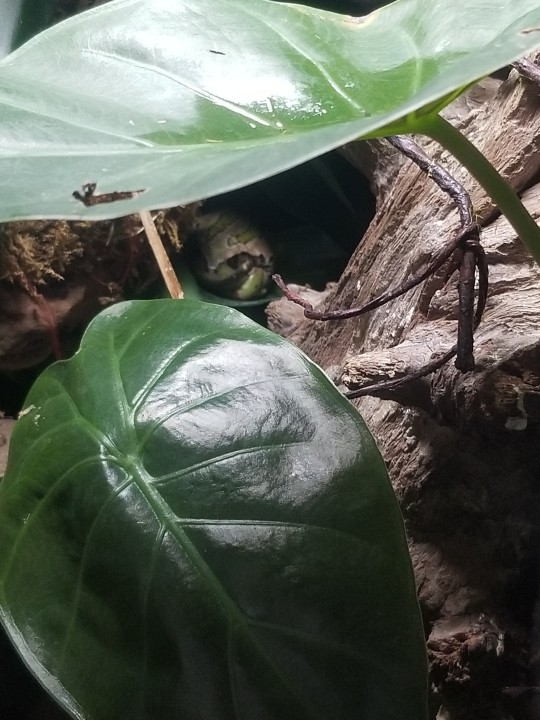
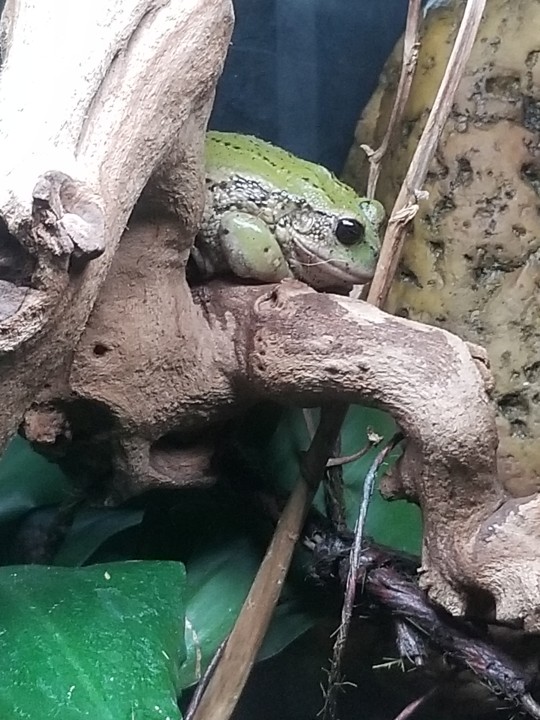
These little meatballs are looking beautiful tonight.🐸
Top photo is nelly skulking around in the dark, bottom photo is phlegm, enjoying the UVB it seems 🥰
#animals#bioactive#petblr#pets#reptiblr#reptile#beautiful#cricket#UVB#marsupial species#marsupial#marsupial frog#frog#toad#riobamba#amphibian#live plants
12 notes
·
View notes
Text

Mostly a note to myself because I'll lose any note I make I can't search up online: today I changed out all the UVB tubes :)
#frozen thawed#animal death#snake feeding#hungry hog#uvb#enclosure#hoggy#plains hognose#hognose#hognose snake#western hognose#reptile#snake#reptiblr#snekblr#my snek#reptile keeper#snakeblr#oc
11 notes
·
View notes
Text
don’t care didn’t ask plus you think uvb is going to make your leopard gecko go blind
#shitpost#shitposting#sillyposting#leopard gecko#eublepharis macularius#leos#uvb#reptile owner#reptile#reptiles#reptiblr
5 notes
·
View notes
Text
Winter Sun Safety: What to Know About Protecting Yourself During Colder Months
The Skin Cancer Foundation Shares Tips on Staying Sun Safe
New York, NY – Fall is finally here, and many parts of the country are already experiencing cooler weather, more precipitation and more overcast days. It’s easy to associate vigilant sun protection with summertime, when the sun is shining intensely. This shouldn’t be the case: Sun protection is necessary every day, regardless of the weather or time of year.
“Even when it’s cold or overcast, UV rays that cause skin aging and skin cancer are reaching your skin,” says Deborah S. Sarnoff, MD, president of The Skin Cancer Foundation. “In the right winter weather conditions, you can sustain sun damage just as easily as during the summer.”
Winter Sunlight
UVB rays, the main cause of sunburn, are the strongest in the summer. However, UVB rays can burn and damage your skin year-round, especially at high altitudes and on reflective surfaces such as snow or ice. Snow reflects up to 80 percent of the sun’s UV light, so the rays hit you twice, further increasing your risk of skin cancer and premature aging.
UVA rays remain constant throughout the year and can penetrate through clouds and fog. UVA rays can also penetrate glass, so it’s still possible to damage your skin while spending a bright winter day indoors.
Staying Sun Safe
Your first line of defense against this sun damage is clothing. Covering up is easier in the winter — it’s cold! — but the face, head and neck tend to remain exposed year-round, and this is where most skin cancers occur. Don’t forget your UV-blocking sunglasses and broad-brimmed hat before heading out. Sunglasses protect your eyes while also fighting snow glare, and a hat keeps you warm while keeping UV rays from damaging your scalp.
Apply a broad-spectrum sunscreen with an SPF of 15 or higher daily to all exposed skin, and make sure to cover often-missed spots like the tops of your ears, around the eyes and near the hairline. Consider choosing a moisturizing sunscreen with ingredients like lanolin or glycerin to combat dry winter skin. Finally, try to avoid the peak sun hours between 10 AM and 4 PM, and seek shade when you can.
Winter is approaching, but that’s no reason to let up on the sun safe habits you practiced during the summer. Continuing sun protection efforts through the colder, cloudier months of the year reduces your risk of developing the most common cancer.
4 notes
·
View notes
Note
Look into reptile uvb, still expensive but good quality. I like Arcadia brand
They are also pretty expensive lately. I was looking at the local stores and the bulbs were selling for $30-60. I ended up buying some avain sun bulbs online that were on sale for $17 but their listed price was $27. I definitely don't remember even the cheapest reptile uvb bulbs being this expensive before. I wonder if reptile owners has noticed the prices raising as well?
11 notes
·
View notes
Text
Protector solar facial de Ringana: todo lo que necesitas saber sobre sus ingredientes
Bienvenid@ de nuevo a mi (nuestro) blog🌸 Me gusta el sol, y en el momento que empieza a hacer menos frío salgo a mi “terracita” a darle la bienvenida. Pero claro, el sol de ahora no es el mismo de febrero (aunque algunos días me ha llevado la contraria), y en el momento que el sol es más intensito (y quiero seguir estando en la terraza), y ya he absorvido mi dosis de vitamina D, toca usar…
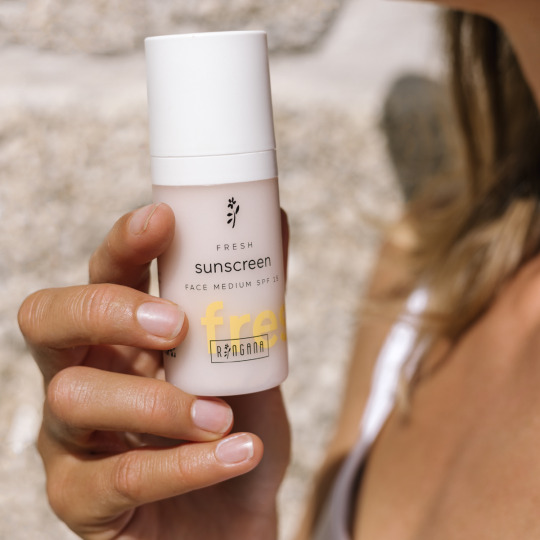
View On WordPress
#amomipiel#BellezaConsciente#colipa#cosméticanatural#CrueltyFree#cuidadodelapiel#disruptoresendocrinos#evitaelcancer#fondomarino#hawai#hoymecuido#infrarojos#luzazul#MedioAmbiente#ProtecciónSolar#reciclaje#ringana#rutinasaludable#skincare#sostenible#UV#UVA#UVB#vegan#veranoprotegido
3 notes
·
View notes
Text
Steps in a skincare routine (+ tips)
Here are the usual steps (more details below):
Cleansing (essential)
Toner
Exfoliant/Exfoliator
Essence and Serum
Moisturizer (essential)
Sunscreen (essential)
Important tips are at the bottom of the post. (This is an extremely lengthy post with more to come.)
There are no product recommendations in this post.
Def. Cleansing/Cleanser:
Cleansing is washing your face with face soap. There's a different type of soap for your face probably because the skin on your face is more sensitive to things. Some cleansers also have ingredients to help you combat your skin concerns.
There are two types of cleansers: oil cleansers and water-based cleansers. If you use an oil cleanser, make sure to use a water-based cleanser afterward to wash off any remaining dirt/oil on your face (also because after an oil cleanser, your face might still feel oily). If you aren't using an oil cleanser, you can just use the water-based cleanser by itself. People usually use oil cleansers and double cleanse to remove makeup properly or to remove excess oil if you're skin is more on the oily side.
[Def. Double cleansing is using an oil cleanser and a water-based and a water-based cleanser as explained above.]
+ Gently rub in the cleanser for ~1 minute before rinsing it off so it can have its full effect. (1 minute for each cleanser.)
Def. Toner:
Toners are used as the final cleansing step (is what the internet says). They hydrate your face too. To be honest, i would just use a toner as an essence (step 4). Toners are optional and I do not do this step myself (if you want to use a toner just to cleanse your face, i honestly find it unnecessary).
Most people use it by pouring some of the product onto a cotton pad and swiping all over the face with it. Personally, i find it wasteful so i would recommend this instead:
+ Pour a bit of the toner into the palm of your hand and gently rub your two hands together to spread the product all over your hands and then tap the product onto your face.
The above tip applies to more watery toners. The application depends on the viscosity of the toner and the way it comes out of its container.
+ If it's in a spray bottle, just spray it onto your face and tap it in with your hands to make sure the product is spread all over your face.
+ If the toner is thicker and won't drip everywhere like water, just apply a few drops on your face and spread it with your hands. This could also work if the toner is in a bottle with an eyedropper. (For example, the bottles used for many of The Ordinary's products - not for their toner though.)
Def. Exfoliant/Exfoliator/Exfoliating/AHA/BHA:
Exfoliant or exfoliator - it's the same thing, they are synonyms.
Exfoliators help remove dead skin and dirt. The main reasons why you might want to use exfoliator: acne, changes in the color of your skin (like hyperpigmentation).
There are two categories: AHA (alpha hydroxy acids) and BHA (beta hydroxy acids). AHA seems to be better for skin color changes (hyperpigmentation) and BHA seems to be better for acne because of its antibacterial properties. (As a rule of thumb,)DO NOT USE BHA/AHA AND BHA/AHA AT THE SAME TIME. (You can use some at the same time depending on the situation. Look up what ingredients can't be mixed with the one you're inquiring about.) Here's an excerpt from my salicylic acid post about it:
"It should be fine if you use salicylic acid (BHA) for example in the morning and then use other BHAs or AHAs products at night because you washed your face before using the products, but i personally wouldn’t take the risk."
Some examples of AHAs:
Glycolic acid
Lactic acid
Mandelic acid
Some examples of BHAs:
Salicylic acid
Benzoyl peroxide
If you are unsure if your ingredient is a BHA or an AHA, just look it up. (Like "Is x BHA or AHA".) If an ingredient has "acid" in its name, it does not automatically mean it is a BHA or an AHA (as you'll see in the next step). Ingredients that have similar effects as BHAs or AHAs aren't all necessarily BHAs or AHAs, so you can use them together with BHAs or AHAs (ex. niacinamide, alpha arbutin, vitamin C).
+ The way you apply exfoliators may vary depending on the type. Look at the instructions on your bottle to proceed accordingly or you could end up overusing the product and damaging your skin.
+ For harsher exfoliants like salicylic acid (BHA), i prefer to do spot treatment. I would put a drop or a small amount of the product and apply it to the concerned areas. As a general rule of thumb, i would suggest doing spot treatment for exfoliants (especially BHAs).
+ Some exfoliants make your skin more sensitive to UV rays from the sun so make sure to apply sunscreen during the day (it also helps with the effectiveness of the exfoliant).
Scrubs are also a type of exfoliant, but i will not be talking about them since i have never used them on my face. Maybe i'll research it another time.
[Def. Scrubs (for your skin, not what health workers wear) are exfoliators with granules that you wash off like cleansers.]
Def. Essence and Serum
Essences and serums have the same effect: hydration and/or moisturization.
[Def. Hydration: Hydrating ingredients attracts water to the outermost layer of the skin. (Even if you use a bunch of hydrating serums and essences, drinking lots of water every day will help a lot with skin hydration (go drink water right now). You should be drinking 2L of water every day (i don't but do as i say, not as i do).)]
[Def. Moisturization: Moisturizing ingredients act as lubricants and lock in moisture and hydration. This is why we call cream/lotion* 'moisturizer'. Products advertised as 'moisturizing' often have moisturizing and hydrating properties.]
*The term 'lotion' on Japanese products refers to serums or essences, not moisturizers. It could also refer to lube but we're talking about skincare here.
To my understanding, the difference between serums and essences is their viscosity/thickness. Essences are less viscous/thinner and serums are more viscous/thicker. More on the order of application at the bottom in the tips.
+ If the product is watery, you can rub it in your hands before tapping it into your face.
+ If it is thicker, you can just put a few drops on your face directly and spread it.
Honestly, you can also put it in your hand first if you prefer doing it that way. I just prefer putting it on my face directly if the packaging allows me to do so because i want to use the least amount of product possible with it still being able to cover my whole face. (I usually use two drops. Tips about this are at the bottom.)
Def. Moisturizer:
Moisturizers are creams or lotions. As mentioned above, moisturizers are used to lock in hydration and moisture. Some moisturizers are thicker/heavier and some are lighter/thinner. It depends on your skin type and your preference.
If you have dryer skin, i would suggest thicker moisturizers because they feel more moisturizing and like they keep the moisture in better. If you have oilier skin (oiI), i would suggest lighter moisturizers so they feel less heavy because if it's thicker, it might feel like another uncomfortable layer of oil on your face. If you have combination skin, it is better to use a lighter moisturizer on oilier areas and a thicker moisturizer on dryer/not oily areas. This is just my opinion on the texture of moisturizers.
Def. Sunscreen
Sunscreens are also a crucial step in your routine. It protects your skin from sun damage - preventing sun spots and slowing down skin aging. UV rays can also worsen your hyperpigmentation - sunscreen can prevent that. Some products also work better with sun protection as mentioned in the exfoliant step.
Higher SPF levels mean that the sun protection lasts longer.
[Def. SPF is Sun Protection Factor.]
The highest is SPF 100, but you can just use SPF 50 (sometimes there are +++ besides the 50, meaning it is more than SPF 50 duh). SPF 100 sunscreens aren't easily accessible because the FDA (Food & Drug Administration of the US) deems some of the UVB filters (ingredients) generally not regarded as safe or effective. There isn't much difference between the two anyways;
SPF 100 blocks 99% of UVB rays
SPF 50 blocks 98% of UVB rays
SPF 30 blocks 97% of UVB rays
SPF 15 blocks 93% of UVB rays
Most Asian sunscreens have SPF 50+, so i recommend looking at stores or websites that carry Asian beauty products for them. I also prefer using them because they are way less expensive than ones from Western brands and have a better texture than the Western drugstore sunscreens for a similar price. You also have more choices to fit your skin type better.
[Def. UV stands for ultraviolet (rays). They come from the sun.]
[Def. UVA stands for Ultraviolet A. It's a type of UV ray that has a longer wavelength and is associated with skin aging. UVA rays make up 95% of the UV rays that reach the ground - that reach your exposed skin.]
[Def. UVB stands for Ultraviolet B. It's a type of UV ray that has a shorter wavelength and is associated with skin burning. UVB rays make up 5% of the UV rays that reach the ground - that reach your exposed skin.]
The SPF number also tells you the amount the time it protects you before you need to reapply. For example, if your skin burns in 1 minute, SPF 50 can protect you for 50 minutes (this is just an example, i don't think most of us get sunburned in one minute).
The more melanin you have (what provides pigmentation to your hair, eyes, and skin), the more ultraviolet protection you have - the longer your skin doesn't burn without sunscreen. That is why people with light eyes, hair, and skin get sunburnt more easily and people with darker hair, eyes, and skin get sunburnt less easily.
Reapplication time: every 2 hours (every time you get out of the water if you're swimming outdoors).
Sunscreens can come in cream, stick, and powder form. The latter two are better used as reapplication though. Even with the label indicating SPF 50, sun sticks and powder don't have the full SPF 50 protection in one layer. You need to apply an uncomfortable amount of layers of the product to get to SPF 50. At that point, i would just wash my hands and apply the regular sunscreen.
[Def. PA stands for Protection Grade of UVA. These ratings measure a product's ability to block UVA rays. You can find PA ratings on sunscreens, makeup, and skincare products. The number of '+' beside 'PA' indicates the amount of UVA protection;
PA+ | Some UVA protection
PA++ | Moderate UVA protection
PA+++ | High UVA protection
PA++++ | Extremely high UVA protection.]
Basically, if you're looking to prevent sunburns, look for a high SPF (50). If you're looking to slow down skin aging, look for a high PA (++++). You can easily find these ratings on Asian sunscreens.
Important tips (these aren't suggestions unless i say so):
Make sure to wash your hands properly with soap for 20 seconds, making sure to clean your nails and your finger slits before applying anything to your face. Even before cleansing. Maybe you're breaking out because you're touching your hands with filthy musty hands.
[Def. Breaking out in pimples] Am i overdoing the definitions...?
Do patch tests. You never know if your skin would react badly to a certain ingredient. For a more accurate result, you should do the patch test on your face. Patch testing is crucial for people with sensitive skin.
[Def. A patch test is pretty self-explanatory; testing on a patch of skin (not your whole face).]
Order of application of your products: the essential steps are in the order i wrote at the beginning of this post (cleanser, moisturizer, sunscreen). All the other steps are sandwiched between the cleanser and the moisturizer. If you aren't sure of the order of your exfoliators and/or of your serums and essence, just go from thin to thick - lower viscosity to higher viscosity. This is the reason why the steps in a skincare routine are as they are. Toners are generally thinner than exfoliators, exfoliators are generally thinner than serums, and essences are generally thinner than serums. If you noticed, this means you can use essences before exfoliators. That is why i said i would use toners as essences since they are essentially the same in texture and use (in my opinion). Regarding these middle steps, i do not think it is necessary to follow the toner, exfoliator, essence, serum order.
Using a little product for a big surface: the trick is to dot your product in every area of your face before spreading it. If you just put your product in one area of your face and spread it from there, the first areas will already absorb most of the product before it reaches the rest of your face.
I first put 2 drops of the serum/essence on my finger or my face (it depends on the packaging - whatever's easier) and then tap it around my face with one finger: two dots of product (still from the same 2 drops) on each of my cheeks, one or two on my forehead, and one on my chin. Then i spread it and tap the product in, making sure my whole face is covered. (This can go for any other product that you use all over your face.) Obviously you can need more or less to cover your face because we don't all have the same face size, so adjust as needed.
Rubbing or tapping? Should you rub in your product or tap it in? I tap it in. I mentioned above that i spread the product before tapping it in, but you can also tap it in without doing that. I just find it more time efficient to spread it first. When i say spreading, i don't mean it as rubbing. I spread the product lightly with my finger without tugging at my skin, letting my finger slide across my face with the product. I don't do this with all products (like a thick moisturizer), but most of the time i do.
If you're afraid of wrinkles, i suggest tapping in your product like i explained above. I just prefer tapping because it feel nicer and fancier. Also because i'm Asian like Cho Chang from Harry Potter (what a meaningful and beautiful name - J.K. Rowling is truly great at being a bigot).
I will add more tips if i think of more.
#skincare#sunscreen#cleanser#moisturizer#bha#aha#exfoliation#toner#essence#serum#exfoliant#exfoliator#oil cleanser#uv rays#uvb#uva#cleansing
3 notes
·
View notes
Text
The cryptic Russian radio station that's driving people insane: UVB-76

UVB-76 is a shortwave radio station stationed (pun intended) in Russia. It's nicknamed "The Buzzer" because it, well, buzzes. This buzzing sound follows a pattern which...I'll just let Wikipedia describe this one.
The signal consists of a buzzing sound that lasts 1.2 seconds, pausing for 1–1.3 seconds, and repeating 21–34 times per minute. Until November 2010, the buzz tones lasted approximately 0.8 seconds each.[1][10] One minute before the hour, the repeating tone was previously replaced by a continuous, uninterrupted alternating tone, which continued for one minute until the short repeating buzz resumed, although this stopped occurring in June 2010.
So, yeah, most of the time it kind of just buzzes. But sometimes a voice interrupts its regular routine. This voice is Russian and can follow one of three formats.
Monolith. Callsign is read out twice. These callsigns consist of four Russian letters and digits. Then, 5 digit ID groups are called, and then message blocks, made up of one code word + eight digits. These are the most common.
NZhTI NZhTI 34 511 GOLOSOK 80 17 81 54
2. Uzor. Callsign is read out twice. Message blocks: one code word + four digits. These are rare.
MDZhB MDZhB TsYeNTIM 61 51
3. Komanda. Callsign is read out twice, then a codephrase (command announced), then a number. These have not been seen on UVB-76 for years.
MDZhB MDZhB OB'YaVLYeNA KOMANDA 135
These three are the standard transmission types heard on the Buzzer, but once in a while, an unusual one might come up...
November 3 (my birthday!), 2001: Я – 143. Не получаю генератор... идёт такая работа от аппаратной. (English: I am 143. Not receiving the generator [oscillator]... that stuff comes from hardware room.[22])
September 2010: Офицер дежурного узла связи "Дебют", прапорщик Успенская. Получила контрольный звонок от Надежды... поняла.[24] (English: "Officer of the duty station 'Debut', ensign Uspenskaya. Received a test call from Nadezhda... understood.")
May 15, 2020, the sound of French being spoken was heard.
Also played Gangnam Style once??
On May 4, 2024, a pirate decided to contact UVB-76.
Unknown pirate: А можно шутку рассказать? . . . Один «ррр» (звонок) – «да», два – «нет». (English: Can I tell a joke? One "rrr" [buzz] for "yes", two for "no".) UVB-76 operator: *Two clear buzzes.* Unknown pirate: За что?? . . . А музыку включить можно? (English: What for? But can I turn on some music?) UVB-76 operator: *Two clear buzzes.* Unknown pirate: Почему!? . . . А за такие вопросы вам ничего не будет? (English: But why!? Are you going to get in trouble if you answer my questions?) *UVB-76 buzzer starts.* Unknown pirate: Да блин! (English: Well, damn!)
I will say this made me giggle (I'm also fluent in Russian, which just made it funnier).
Anyway, on to the next bit!
What is the Buzzer EXACTLY for?
Truth is, nobody knows. There hasn't been any official statement regarding its purpose, though some believe it's just to make sure "operators at receiving stations are alert (Wikipedia)." Others say it's for military commissariats.
So what do I think?
I don't know much about radios, but I think it's really just for monitoring other radio stations. It sends out callsigns so that other stations can follow commands. Like I said, I don't know much about radios and this might make absolutely no sense to people well-versed in radio stuff.
If you want to read more, I've provided a link to the Wikipedia page down below! Thanks for reading :>
0 notes
Text
Lung inflammation: sunlight, humidity, particulates and “allergies”
ASL= airway surface liquid
.

.

.

.

.

.

.

.
:

:::
:::

:::
:::
Reminder of steps of vitamin d synthesis from UVB sunlight

1 note
·
View note
Text
Merkittävä muutos aurinkovoiteiden SPF testausmenetelmiin
Aurinkovoiteet ovat olleet viime vuosina runsaasti esillä ja syystä. Auringon aiheuttamien ihovaurioiden vaarat ovat selkeämmin tiedossa ja auringon haitalliselta säteilyltä suojautuminen on tullut entistä tärkeämmäksi. Kosmetiikkateollisuudessa pyritään usein löytämään parhaat vaihtoehdot kulloisenkin tiedon pohjalta, mutta kuten kaikessa muussakin, myös kosmetiikassa moni asia on…
#aurinkosuoja#aurinkosuojatuotteet#aurinkovoide#aurinkovoiteiden testaus#aurinkovoiteiden turvallisuus#DPM-menetelmä#in vitro#in vivo#ISO 23675:2024#SPF-testaus#UV-säteily#UVA#UVB
0 notes
Text
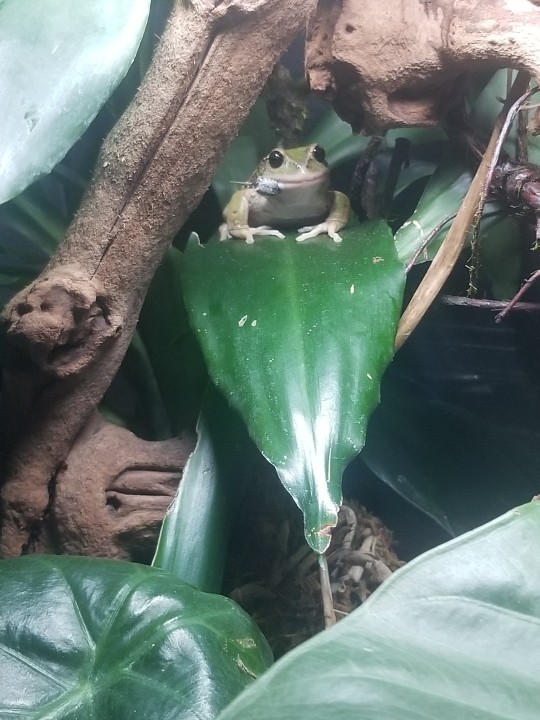
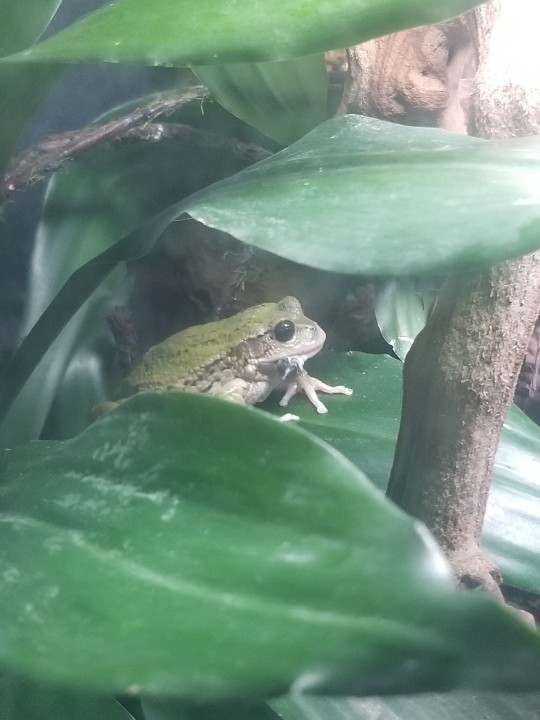
Meet phlegm, one of our 2 adult female marsupial frogs.
Shes enjoying a calcium dusted cricket!
(One of many shes a chonker)
#reptiblr#pets#petblr#animals#frog#toad#marsupial#marsupial species#marsupial frog#treefrog#tree frog#reptile#bioactive#terrarium#uvb#cricket#cute
7 notes
·
View notes
Text
reasons i generally don't mention UVB when explaining care to a new leopard gecko keeper: in vet med ive had to beg too many people to stop feeding their dog a diet of strict fast food to have faith that the majority of reptile keepers even remotely are interested in learning the ins and outs of the electromagnetic spectrum
#vet med#veterinary#veterinary medicine#vet staff#vet tech life#leopard geckos#leopard gecko#gecko#herpblr#UVB#herpetoculture#herpetofauna#herpetology#shitpost#shitposting#sillyposting
1 note
·
View note
Text
The first of its decomposition is a photochemical process that requires energetic radiation having wavelengths at the lower end of the UV-A and in the UV-B regions of the spectrum.

"Environmental Chemistry: A Global Perspective", 4e - Gary W. VanLoon & Stephen J. Duffy
#book quote#environmental chemistry#nonfiction#textbook#formaldehyde#photochemistry#decomposition#energetic#radiation#uv light#uv radiation#uva#uvb
0 notes
Text
The UV portion of the radiation that is emitted by the Sun is down as the solid line in Fig. 3.3. (...) Ozone is the species responsible for intercepting these UV photons but, as shown in Fig. 3.3, it has a relatively small absorption cross-section in the UV-B wavelength range and almost no ability to absorb UV-A radiation. (...) As we have seen, ozone absorbs radiation with wavelengths between 200 and 315 nm (Fig. 3.3) with maximum absorbance near 255 nm. (...) If the curve for ozone in Fig. 3.3 was extrapolated to 1123 nm, it would be seen that the absorption cross-section is very small at that wavelength.

"Environmental Chemistry: A Global Perspective", 4e - Gary W. VanLoon & Stephen J. Duffy
#book quotes#environmental chemistry#nonfiction#textbook#ultraviolet#uv radiation#ozone#oxygen#photons#solar flux#uva#uvb#uvc#wavelength#radiation#absorption
1 note
·
View note
Text
Exposition au soleil : santé et naturopathie
Es-tu de ceux qui se tartinent de crème solaire tous les jours et fuient le soleil comme la peste, ou fais-tu partie de ces gens qui lézardent au soleil dès qu’un rayon pointe le bout de son nez ? Dans un cas, comme dans l’autre, tu pourrais bien nuire à ta santé sans le savoir. Il existe pléthore d’études qui démontrent les méfaits du soleil sur la santé. Cependant, il y en a tout autant qui…
1 note
·
View note